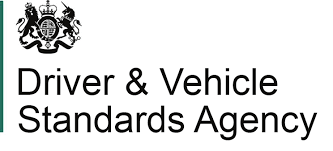Frequently Asked Questions About the MOT Test
We answer common questions about MOT and give our advice on the most common reasons for MOT failure.
MOT FAQs
Yes, absolutely. It is important to understand that they are two separate activities in our workshop. An MOT will check the roadworthiness of your vehicle based on strict DVSA guidelines. We do not remove wheels, we do not road test (unless 4×4) and we are not allowed to remove any engine covers. On a service, depending on which one you ask us to complete we will replace engine oil, remove the wheels, check your brakes, and give you advice on tyre wear and condition.
There is no time set by DVSA for an MOT, typically it will take us between 50 – 60 mins, but we prefer not to give a set time as if we set and expectation on time and do not meet it, for whatever reason, we feel we are letting you down.
With our business, we prefer you to drop your vehicle off in the morning for MOT’s required before 1300hrs and drop off at 1200hrs for MOT’s required for 1700hrs.
You should check lights, tyres, wipers, mirrors, seatbelts, horn, and fluid levels. Make sure all bulbs work, tyres have legal tread depth (at least 1.6mm), and washer fluid is topped up.
Yes. A clean car makes inspection easier and gives a good impression. Ensure number plates, lights, and mirrors are clean. The tester can even refuse to test excessively dirty vehicles.
Definitely. Make sure all tyres have the correct pressure, tread depth above 1.6mm, and no cuts, bulges, or exposed cords. Don’t forget the spare tyre if your car has one.
Potentially, yes. The tester may refuse to continue if there’s not enough fuel or oil to run emission tests. Also, refill washer fluid and brake fluid as they’re part of safety checks.
Yes. Turn on all lights — headlights, brake lights, indicators, reverse lights, and number plate lights — and replace any that don’t work. Faulty bulbs are among the most common MOT failures.
Usually, just your car keys. The MOT centre can access your records digitally. However, bring your V5C logbook and previous MOT certificate if requested or if you’re visiting a new garage.
Yes. If any warning lights (like engine management, ABS, or airbag) stay on, the vehicle may fail. Have these checked or reset before the test.
Absolutely. Make sure wipers work properly and the screen is clear of cracks or chips larger than 10mm in the driver’s view area (Zone A). Damaged wipers or glass can cause a fail.
It’s wise to check your car at least two weeks before the MOT date. This gives you time to fix small issues like bulbs, tyres, or wipers before the test.
Only if the old MOT is still valid and the car is roadworthy. If it fails for a dangerous defect, you can’t drive it away except to a garage for repairs.
Common MOT Failures
Reason: Burnt-out bulbs, broken lenses, or misaligned headlights.
Tip: Check every light — headlights, brake lights, indicators, fog lights, and number plate lights — before the test. Replacing bulbs is quick and cheap.
Reason: Tread depth below 1.6mm, cuts, bulges, or uneven wear.
Tip: Use a 20p coin to check tread depth. Also check for proper inflation and matching tyre types on the same axle.
Reason: Ineffective wipers, cracked windscreen, or empty washer fluid.
Tip: Replace worn wiper blades and top up screenwash. Even an empty washer bottle can cause a fail.
Reason: Worn brake pads, discs, or unbalanced braking.
Tip: If your brakes feel spongy, pull to one side, or make noise, have them checked before the test.
Reason: Broken mirrors, frayed seatbelts, or non-functioning buckles.
Tip: Ensure all mirrors are secure and seatbelts retract properly.
Reason: Worn shock absorbers, broken springs, or damaged components.
Tip: Listen for knocking noises over bumps — a sign of suspension wear. Get it checked before your MOT.
Reason: Airbag, ABS, engine management, or tyre pressure lights staying on.
Tip: Don’t ignore warning lights — they’re often easy fixes like sensors or fuses.
Reason: Chips or cracks over 10mm in the driver’s line of sight or 40mm elsewhere.
Tip: Repair small chips early — many insurers fix them for free.
Reason: Excessive smoke, leaks, or high emissions readings.
Tip: Keep your car serviced. A long drive before the MOT helps burn off residue and reduce emissions.
Reason: Rust on key structural points like sills, seat mounts, or suspension areas.
Tip: Regularly clean the underside and treat rust early to prevent spreading.

